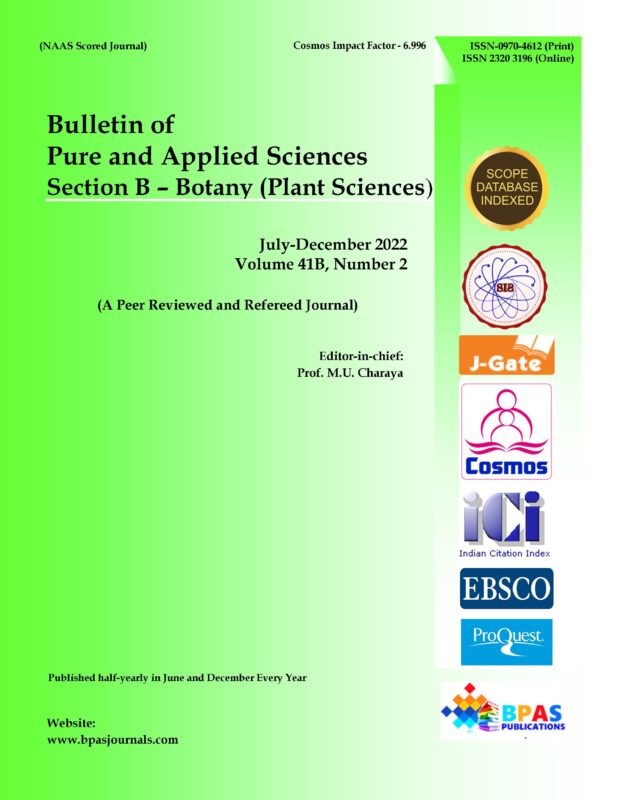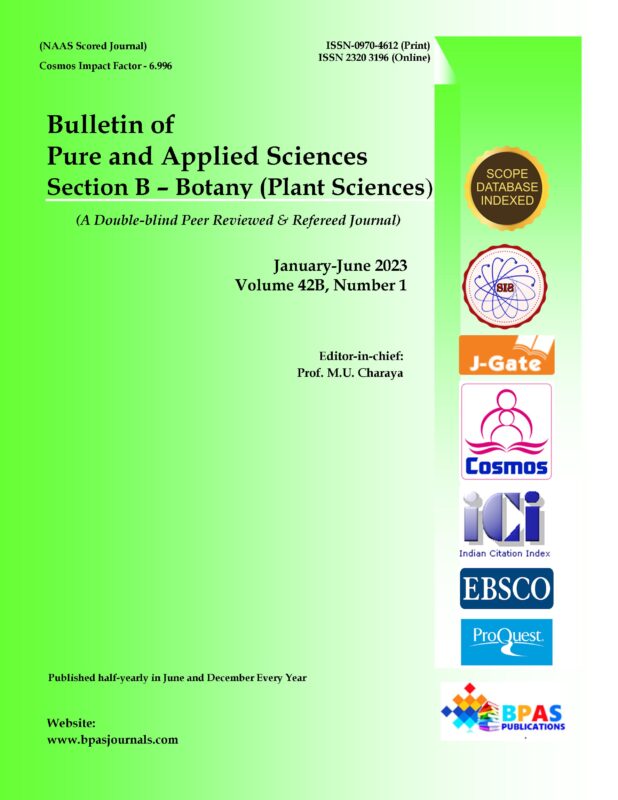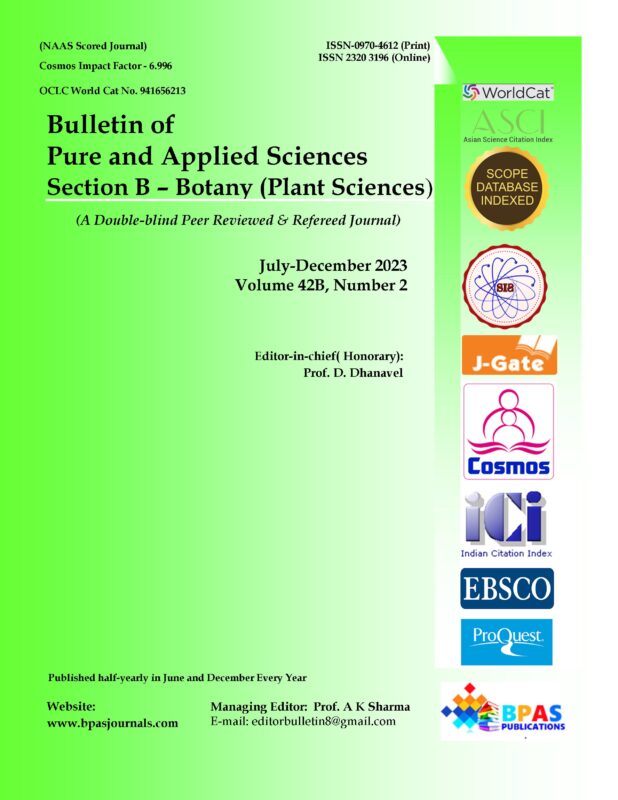HPTLC Quantification of Withaniasomnifera (L.) Dunal
9.38$
1Raman Preet*, 2Lata
Bulletin of Pure and Applied Sciences.
Botany, Vol.41 B, No.2.
July-December 2022: P.117-125
Original Research Article
DOI: 10.5958/2320-3196.2022.00014.3
Description
HPTLC Quantification of Withaniasomnifera (L.) Dunal
1Raman Preet*, 2Lata
Author’s Affiliation
1Assistant Professor, Department of Botany, DAV College, Abohar, Punjab 152116, India
2Assistant Professor, Department of Botany, Eternal University, Baru Sahib, Himachal Pradesh, India
*CorrespondingAuthor:
Raman Preet
Assistant Professor, Department of Botany,
DAV College, Abohar, Punjab 152116, India
E-mail:
ramanbrar247@gmail.com
How to cite this article: Preet R., Lata (2022). HPTLC Quantification of Withaniasomnifera (L.) Dunal. Bulletin of Pure and Applied Sciences-Botany, 41B(2), 117-125.
Received on 15.08.2022
Revised on 19.11.2022
Accepted on 30.11.2022
Published on 15.12.2022




